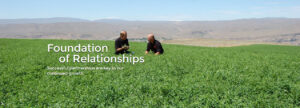 Has your horse’s performance changed recently? Has his attitude toward work changed? Maybe he has lost weight or body condition despite a balanced diet? Is he showing signs of mild colic? He could be suffering from gastric ulcers. Gastric ulcers are basically sores in the lining of the stomach that result from exposure to gastric acids and other substances that lower the pH of the stomach juice. Gastric ulcers in horses are relatively common and occur most often in the proximal (front) third of the stomach nearest to the esophagus, the tube that carries food from the mouth to the stomach. This region of the horse stomach contains cells that are most susceptible to damage. In comparison, the remaining area of the stomach is lined with cells that secrete substances that help to protect them from damage by acids.
Has your horse’s performance changed recently? Has his attitude toward work changed? Maybe he has lost weight or body condition despite a balanced diet? Is he showing signs of mild colic? He could be suffering from gastric ulcers. Gastric ulcers are basically sores in the lining of the stomach that result from exposure to gastric acids and other substances that lower the pH of the stomach juice. Gastric ulcers in horses are relatively common and occur most often in the proximal (front) third of the stomach nearest to the esophagus, the tube that carries food from the mouth to the stomach. This region of the horse stomach contains cells that are most susceptible to damage. In comparison, the remaining area of the stomach is lined with cells that secrete substances that help to protect them from damage by acids.
While all breeds and ages of horses can suffer from gastric ulcers, horses that are in intensive training or competition are more likely to develop gastric ulcers than horses that are used for non-competitive purposes. In fact, more than 90% of race horses have gastric ulcers and the prevalence of gastric ulcers is similar in endurance horses (1). Horses that are moving at gaits faster than a walk have increased abdominal pressure and decreased stomach volume (2). Under these conditions, gastric acid is forced from the rear to the front of the stomach, where cells are more susceptible to injury (2). Similar daily exercise would explain why horses in training commonly have gastric ulcers.
Gastroscopy is the only definitive method of diagnosing gastric ulcers in horses. Gastroscopy is a relatively non-invasive procedure in which a veterinarian passes a video endoscope into the horse’s stomach to visualize and inspect the stomach lining for ulcers. After diagnosis, a veterinarian may prescribe a drug that will suppress acid secretion and promote an increase in stomach pH. Ulcers will heal when horses are treated with acid-suppressing drugs, but easily recur after drug administration ends. Fortunately, certain environmental and dietary management practices can be used to lessen acid formation and prevent the incidence of ulcers in horses.
Exercise intensity of horses with ulcers that are in training or performing at high levels should be decreased until ulcers have healed. If possible, horses should be allowed to graze on pasture. Several studies suggest that horses grazing pasture have low incidence of ulcers (2). If pasture is not an available option, horses should be fed a continuous, high-forage diet (2), preferably alfalfa hay. Continuous consumption of alfalfa hay or alfalfa-grass hay results in greater saliva production than horses that are meal fed 2 – 3 times a day. Saliva contains bicarbonate, which neutralizes stomach acid, so continuous saliva production should decrease incidence of gastric ulcers. In addition, there are indications that the calcium in alfalfa hay helps to raise stomach pH (2).
Performance horses have dietary energy requirements that cannot be met solely by forage. To meet energy needs, these horses require grain. Unfortunately, a high-grain diet induces gastrin production. Gastrin is a hormone that stimulates hydrochloric acid production by the stomach. Studies suggest that damage to the stomach lining is most intense when a single large, high starch meal is fed to horses. However, damage is minimized or averted if the same total amount of grain is distributed in small, frequent meals throughout the day (2).
If you suspect that your horse may have a gastric ulcer, don’t despair. Treatments are available and recurrence can be decreased by environmental and dietary management techniques.
To receive this blog directly in your email, subscribe above to the right.
References
(1) Tamzali, Y. , C. Marguet, N. Priymenko, and F. Lyazrhi. 2011. Prevalence of gastric ulcer syndrome in high-level endurance horses. Equine Vet. J. 43:141-144.
(2) Reese, R.E and F.M Andrews. 2009. Nutrition and dietary management of equine gastric ulcer syndrome. Vet. Clin. Equine. 25:79-92.


